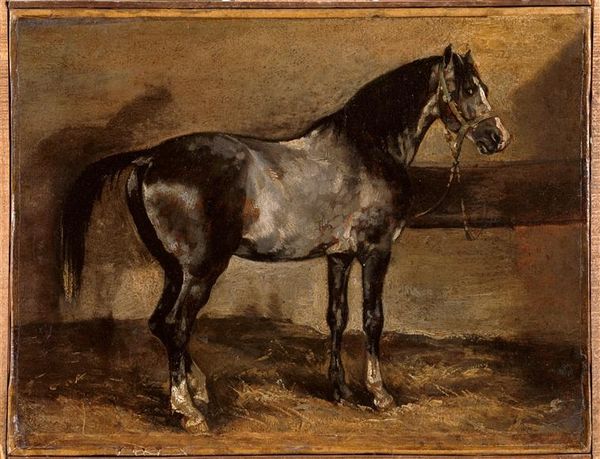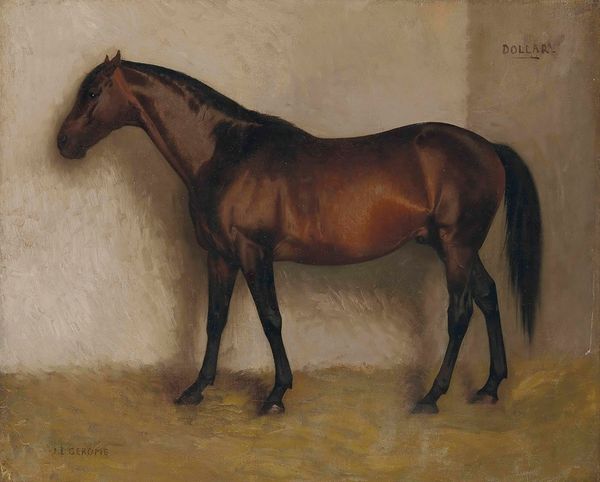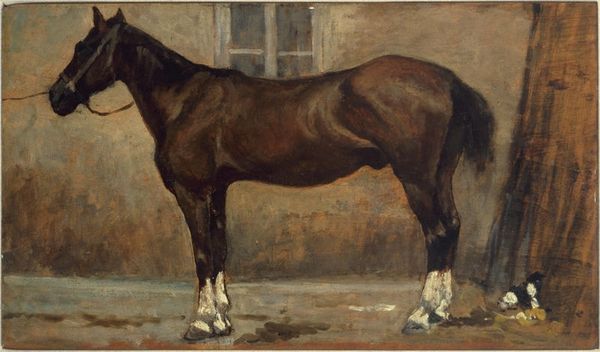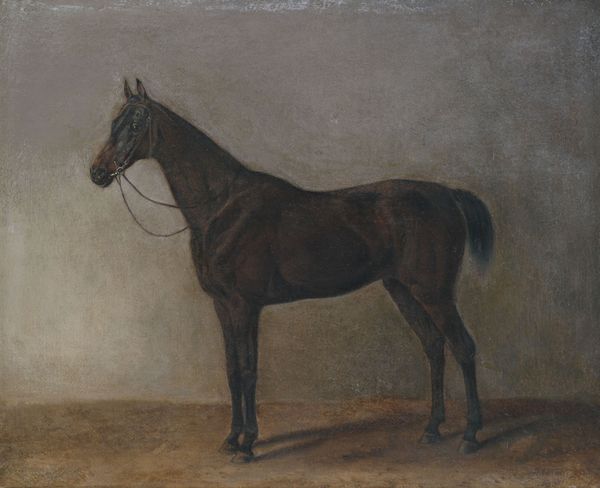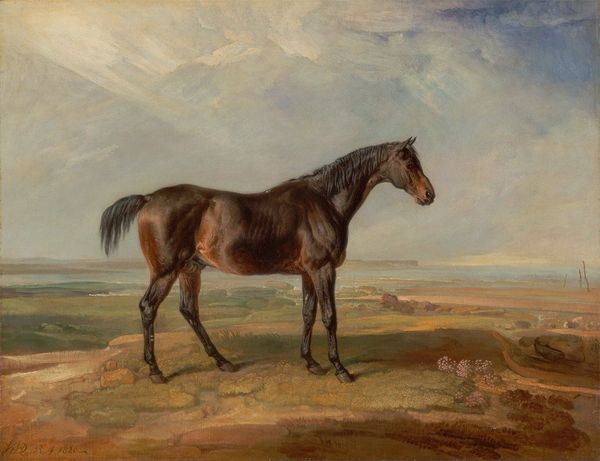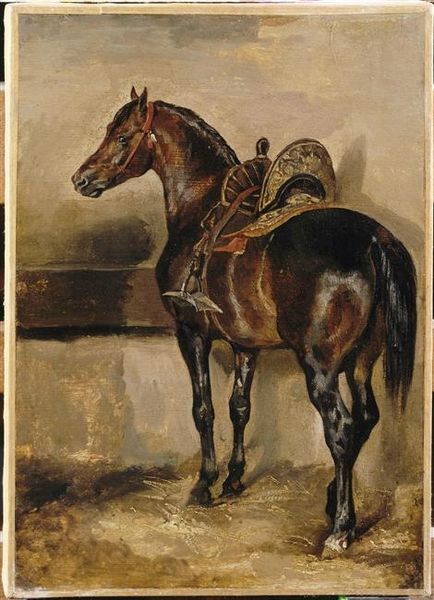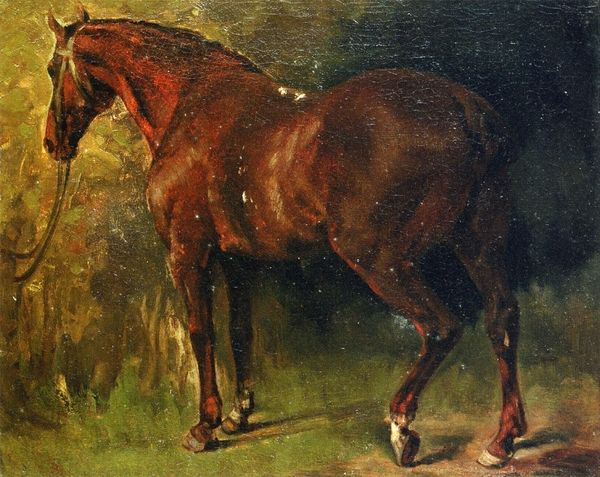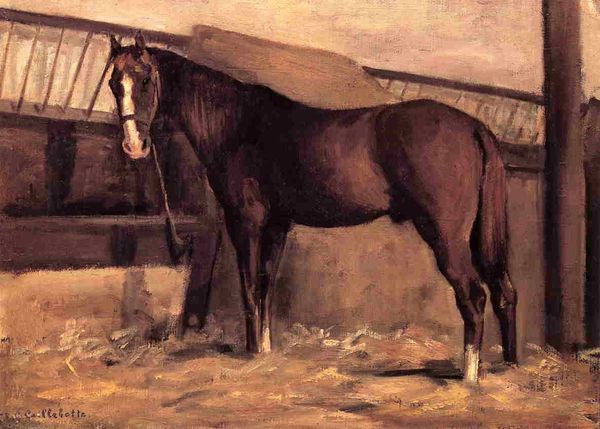
painting, oil-paint
#
portrait
#
animal
#
painting
#
oil-paint
#
charcoal drawing
#
oil painting
#
romanticism
#
animal portrait
#
genre-painting
#
realism
Copyright: Public Domain: Artvee
Curator: The work before us, "Cheval brun à l’écurie", was completed around 1818 by Théodore Géricault. The medium is oil on canvas. Editor: It’s striking how Géricault captures the horse’s stillness. There's a kind of heavy resignation in the animal's posture. You feel the weight of the stable and perhaps its circumstances. Curator: Considering Géricault’s social milieu and interest in the marginal, one can't help but consider what this "animal portrait" says about power dynamics within society at that moment. Is he humanizing the horse, drawing parallels between its constrained existence and certain human conditions? The art world certainly evolved since animals were first portrayed, especially in their association to class status. Editor: Absolutely. The horse as a symbol is so loaded. Traditionally a marker of wealth and nobility, here the animal is confined. I am also drawn to its stark representation. The raw brushstrokes speak to a break from academic idealism. The piece presents the unvarnished reality. Curator: Precisely. It marks the shift toward Realism within Romanticism. Note that even as the artistic academies upheld historical or mythological narratives, paintings of animals gave a means of questioning it, which allowed new political interpretations, even when depicting something as seemingly banal as this domesticated animal in its stable. Editor: Thinking about that intersection between artistic tradition and socio-political commentary really deepens my understanding. I Initially saw a straightforward depiction of an animal but now recognize an element of criticism. It allows to challenge perceptions about what deserves artistic attention and what defines beauty. Curator: And to continue those modern debates concerning the status of beings, questioning the political as well as the personal value of other lives around us, expanding to race, gender, class and species... Editor: This reflection underscores the ability of art to stimulate reflection and push viewers to see things beyond the aesthetic realm and, thus, transform one's comprehension. Curator: It allows, beyond immediate perceptions, to challenge entrenched assumptions of the world order that often dictate aesthetic judgments and social stratification. Editor: Precisely!
Comments
No comments
Be the first to comment and join the conversation on the ultimate creative platform.
